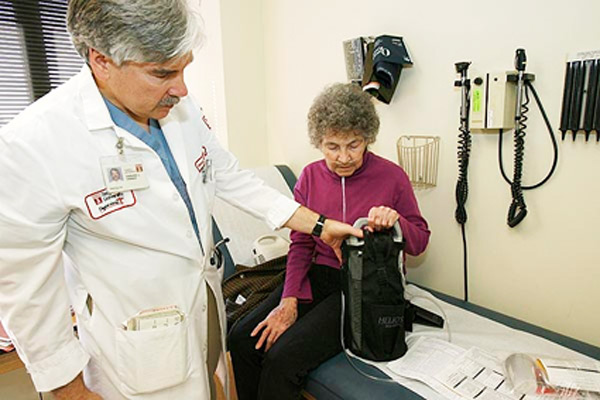 Researchers from the University of Texas Medical Branch at Galveston have found that patients with chronic obstructive pulmonary disease receiving home oxygen have a higher risk of burn injury. This study was published on March 30 in Mayo Clinic Proceedings.
Researchers from the University of Texas Medical Branch at Galveston have found that patients with chronic obstructive pulmonary disease receiving home oxygen have a higher risk of burn injury. This study was published on March 30 in Mayo Clinic Proceedings.
Aside from smoking cessation, no other medical intervention has improved survival and quality of life for patients with COPD more than continuous oxygen therapy. Physicians prescribing oxygen to patients with COPD struggle to balance the benefits with the risk of fire hazard in patients who continue to smoke. The number of active smokers prescribed oxygen is estimated to be 15 to 25 percent. Having heat source or flame near oxygen gas can ignite a fire.
The study examined the risk of burn injury in patients with COPD receiving home oxygen and evaluated the factors associated with the risk of burn injury. The researchers used enrollment and claims data from of Medicare beneficiaries from 2001 to 2010. This nationally representative sample contained 2,055 patients with COPD that did not sustain a burn injury and 685 patients with COPD that sustained a burn injury.
The study found that patients with a burn injury were more likely to have been prescribed oxygen therapy within 90 days before the injury compared to patients with COPD that were not prescribed oxygen. These burn injuries frequently involved the face, neck or hands. Also, patients who had sustained a burn injury associated with home oxygen had a 10-fold greater mortality rate than patients with COPD and no burn injury.
Risk factors associated with burn injury in patients with COPD included male gender, having three or more other medical conditions and low socioeconomic status. The findings also indicated that one out of 1,421 patients with COPD prescribed oxygen therapy sustained a burn injury each year.
“The benefits of oxygen in COPD patients outweigh the modest risks of burn injury,” said Dr. Alexander Duarte, senior author and professor in UTMB’s internal medicine division of pulmonary critical care and sleep medicine. “However, health care professionals should educate and counsel patients and their families on the potential risk of burn injury and attempt to decrease this risk before prescribing home oxygen therapy. The study done by University of Texas Medical Branch at Galveston.